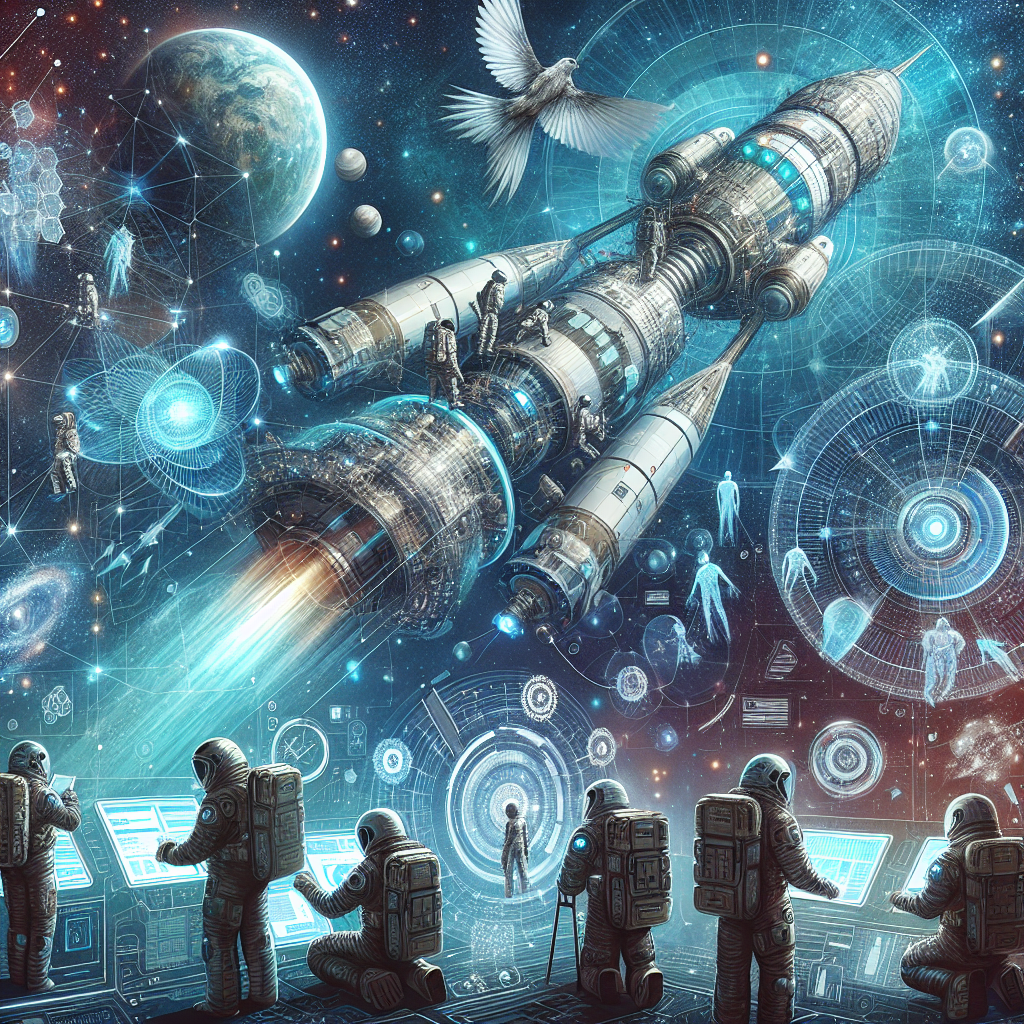Introduction to Space Travel Innovations
The realm of space travel has undergone significant transformations over the past few decades. With technological advancements and innovative approaches, humanity is closer than ever to exploring the farthest reaches of space. This article delves into the cutting-edge innovations in space travel technology that are revolutionizing the industry and making what once seemed like science fiction, a reality.
Reusable Rockets
Reusable rockets are one of the most groundbreaking advancements in the space industry. Traditionally, rockets were designed for single use, making space travel an expensive endeavor. Companies like SpaceX have pioneered the development of reusable rockets with their Falcon 9 series, which drastically reduces costs and paves the way for more frequent space missions.
How Reusable Rockets Work
Reusable rockets are designed to withstand the rigors of launch and re-entry multiple times. They achieve this through advanced engineering and materials that allow them to be recovered, refurbished, and relaunched. This innovation not only makes space travel more economically viable but also environmentally sustainable.
Impact on the Space Industry
The introduction of reusable rockets has significantly lowered the cost of launching payloads into space. This reduction in cost is expected to democratize space access, allowing more countries and private companies to participate in space exploration, thereby accelerating technological advancements and innovations.
Space Tourism
Space tourism, once a distant dream, is now on the brink of becoming a mainstream reality. Companies like Blue Origin and Virgin Galactic are leading the charge in developing spacecraft designed specifically for carrying tourists into space.
Virgin Galactic’s SpaceShipTwo
Virgin Galactic’s SpaceShipTwo is a suborbital spaceplane capable of carrying six passengers and two pilots. The spacecraft is designed to provide a few minutes of weightlessness and a breathtaking view of Earth from space, making it an appealing venture for thrill-seekers and adventurers.
Blue Origin’s New Shepard
Blue Origin’s New Shepard is another major player in the space tourism market. This reusable suborbital rocket system is designed to take passengers to the edge of space, offering an unforgettable experience of seeing the curvature of the Earth and the blackness of space.
Advanced Propulsion Systems
Propulsion systems are the heart of any spacecraft. Advanced propulsion technologies are being developed to make space travel faster and more efficient.
Ion Propulsion
Ion propulsion is an advanced form of propulsion that uses ionized particles to create thrust. This technology is incredibly efficient and is already being used in missions like NASA’s Dawn spacecraft, allowing for longer and more ambitious missions.
Nuclear Thermal Propulsion
Nuclear thermal propulsion (NTP) is another promising technology. It involves the use of nuclear reactions to heat a propellant, providing a higher thrust-to-weight ratio compared to traditional chemical rockets. NTP could significantly reduce travel time to distant destinations like Mars.
Spaceship Design and Habitation
The design of spacecraft and habitation modules is evolving to make long-duration space missions feasible and comfortable for astronauts.
3D Printing
3D printing technology is revolutionizing spacecraft design by allowing the creation of complex parts that are lighter and stronger. This technology is also being explored for building habitats on other planets, using local materials to print structures in situ.
Artificial Gravity
One of the challenges of long-term space travel is the effect of microgravity on the human body. Concepts such as spinning habitats to create artificial gravity are being explored to counteract the adverse health effects of prolonged weightlessness.
Robotics and AI
Robotics and artificial intelligence (AI) are playing a crucial role in space exploration and travel. From autonomous rovers to AI-driven mission planning, these technologies are enhancing our capabilities in space.
NASA’s Robonaut
NASA’s Robonaut is designed to assist astronauts with tasks both inside and outside the International Space Station (ISS), showcasing the potential of robotic companions in space missions.
AI in Mission Planning
AI algorithms are being used to optimize mission plans, analyze vast amounts of data, and even assist in real-time decision-making during missions. This allows for more efficient and successful space missions.
Conclusion
The future of space travel is bright, with numerous innovations paving the way for new possibilities. From reusable rockets and space tourism to advanced propulsion systems and AI-driven solutions, the advancements in space travel technology are setting the stage for an exciting era of exploration and discovery. As we continue to push the boundaries of what is possible, the dream of venturing into the unknown and unlocking the mysteries of the universe is becoming increasingly within our grasp.

